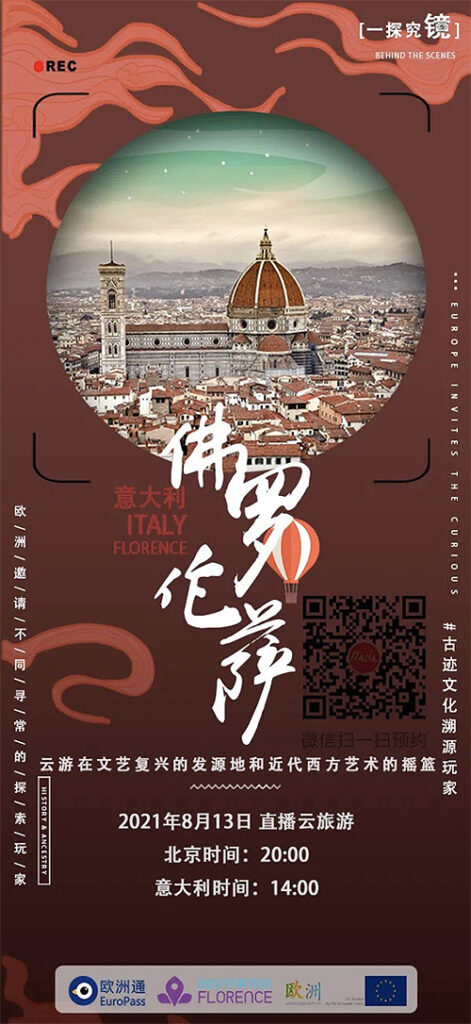Long-haul travel to Europe was in jeopardy even before the pandemic. This was the conclusion drawn by a recent European Travel Commission (ETC) analysis which cited the continent’s generic brand image and the limited marketing resources of its NTOs relative to their international competitors as key factors. The ETC’s response is Horizon 2022, a campaign encouraging members to increase budgets, intensify research, and highlight niche appeal in marketing.
And when it comes to China, potentially the most valuable long-haul market, livestreaming and short-video are being held up as essential tools. China’s stringent coronavirus measures may still be preventing the return of a group that delivered more than 6 million tourists to Europe in 2018, but the ETC is fixed on remaining competitive once travel rebounds and has led Europe Behind The Scenes, a three-month push in which more than 30 destinations have created short-video and livestreaming campaigns.
The move takes a cue from China’s own tourism industry that began leveraging livestreaming and short-video to reach consumers in mid-2020. Jing Travel connected with the DMOs of Italy, Germany, and Switzerland to learn about their experiences livestreaming to Chinese audiences and their post-pandemic hopes for the China market.
Italian National Tourist Board (ENIT)

ENIT’s August livestream attracted more than 25,000 views. Image: ENIT
Hosted by a local correspondent who has lived in Europe for more than 10 years, the hour-long livestream introduced popular tourist attractions in Florence including Piazza del Duomo, Ponte Vecchio, and Piazza della Repubblica. Held on ENIT’s WeChat Channels account, the Florentine livestream drew more than 25,000 views with over 64,000 likes and 3,000 comments.
What’s the backstory ENIT’s livestream?
Cristiano Varotti, Chief Representative of ENIT Shanghai Office: Tourists have been unable to visit physically and we thought as an alternative, livestreaming would allow tourists to travel virtually. Compared to photos and words, livestreaming enables audiences to engage and participate in a virtual journey. For the traveler who has been to our destination, livestreaming brings back memories and fulfills a wish to visit again. For those who have never visited, it’s great for them to get to know us before coming and to inspire them to add our destination to their bucket list.
How can livestreaming help promote Italian tourism and its post-pandemic recovery?
Varotti: Livestreaming is a powerful tool for communicating the “wow elements” of a destination. It’s suitable for reaching an extremely wide audience, especially young travelers. To be effective, a livestream must be simple and direct, using easily understandable language. It allows you to reach target segments that are otherwise difficult to reach, but it can also risk oversimplifying and taking away the depth and complexity of a destination. The challenge is to balance these two aspects and create quality content that speaks to a wide audience.
German National Tourist Board (DZT)

Drawing some 23,000 views, DZT’s Frankfurt livestream spotlit attractions around the city and invited audiences to interact with livestreamers. Image: DZT
Pre-pandemic, Frankfurt was a major flight connection hub for Chinese travelers and, as a result, DZT chose the central German city as the site for its first livestream. The two-hour tour focused on the city’s culture and history taking in Goethe Haus, Neue Alstadt, and Alte Oper. Hosted on Europass’ WeChat Mini Program, the livestream attracted 23,000 views with 13,000 likes.
What’s the backstory to DZT hosting a livestream?
Zhaohui Li, Director of DZT’s Beijing Office: During the pandemic, livestreaming allows audiences to enjoy a travel destination’s scenery, culture, and food without leaving their home. On a livestream, viewers are able to interact and engage with livestreamers, and may gain interest in traveling to the destination in the future. DZT’s livestream campaigns are welcomed by Chinese audiences and help potential tourists create trip plans once China’s outbound travel resumes.
How have you refocused marketing strategies to Chinese audiences during the pandemic?
Li: DZT has made a practical recovery strategy. We focused on developing digital tools, providing creative content, and maintaining close communication with our customers. We used WeChat Mini Programs, livestreaming, online webinars, and themed events to attract potential tourists. All of our marketing strategies have received good feedback and livestreaming is one of our best strategies. Since last year, DZT has carried out many livestream campaigns in China, including “German City Tour” and “The German Kitchen.” We received 1 million views and a lot of good feedback. We want to use a different way to help the Chinese audience look at Germany from another perspective.
Switzerland Tourism Office

Geneva’s tourist attractions were introduced to a livestream audience by a local travel expert — an event that gained some 26,000 views. Image: Switzerland Tourism Office
Switzerland’s DMO collaborated with a local travel expert who specializes in introducing historical sites to tourists. The livestream of Geneva inspired more than 26,000 virtual tourists to take part in live online tours of tourist attractions from Reformation Wall to St. Pierre Cathedral.
How have you refocused marketing strategies to reach Chinese audiences during the pandemic?
Yining Huangfu, Media Manager of Switzerland Tourism’s Beijing Office: After carefully analyzing our own characteristics and the Chinese outbound tourism market, we have completely changed our marketing strategy. We updated our promotion strategies in the Chinese market, precisely segmented the tourist groups according to their interests and hobbies, and paid more attention to new products and new partners. We shifted the marketing focus from traditional travel agency products to meeting the needs of independent travelers.
The Chinese market is developing into an important source of independent travelers. After the pandemic, we will not go back to the past, but start anew. Strategically, we will continue to strengthen our position in the independent travel market.



